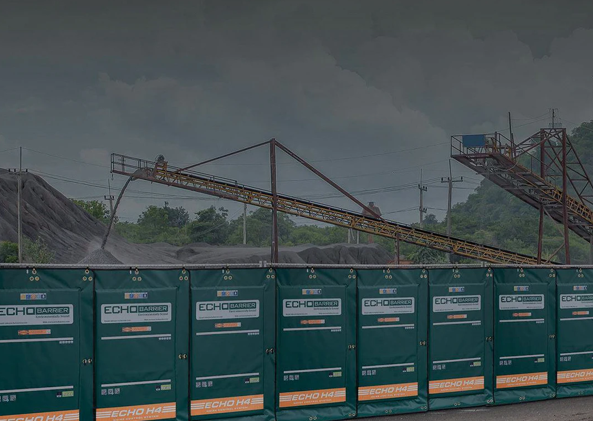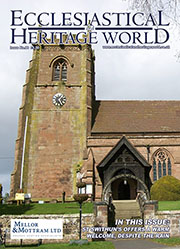Sound decision: Acoustic barriers keep your company compliant
 In this modern world, urbanisation has led to a significant increase in noise pollution, affecting the wellbeing of individuals and communities. Excessive noise from construction sites, transportation hubs, and outdoor events can result in numerous health issues, neighbourhood complaints, and legal challenges.
In this modern world, urbanisation has led to a significant increase in noise pollution, affecting the wellbeing of individuals and communities. Excessive noise from construction sites, transportation hubs, and outdoor events can result in numerous health issues, neighbourhood complaints, and legal challenges.
Noise pollution is a pervasive issue that stems from constant exposure to loud sounds, which can have detrimental effects on people's physical and mental health. Research has shown that persistent noise pollution can result in elevated blood pressure, stress, anxiety, and even heart disease.
Excessive noise can disrupt communities, leading to complaints and legal challenges that may obstruct progress on construction projects and other noise-generating activities.
There are laws and regulations in place to control noise pollution and protect the public's wellbeing. These regulations typically dictate specific noise level limits, designated working hours for construction projects, and other high-noise activities. The primary aim of these regulations is to strike a balance between fostering economic development and ensuring a healthy and peaceful living environment.
The primary legislation governing noise pollution in Britain is the Control of Noise at Work Regulations 2005. These regulations set out the legal requirements for employers to protect their workers from high noise levels, which can result in hearing damage or other health issues. The regulations also apply to construction sites, where noise levels can often exceed the recommended safe limits.
In addition to these regulations, there’s the Environmental Protection Act 1990, which provides local authorities with the power to deal with noise pollution issues. Under this act, local authorities can issue abatement notices to businesses or individuals who are causing excessive noise, requiring them to take steps to reduce the noise levels. Failure to comply with an abatement notice can result in legal proceedings and fines.
One of the most practical solutions for mitigating noise pollution is the use of acoustic barriers. These barriers are designed to reduce and absorb excessive noise, helping businesses maintain compliance with noise regulations and lessen disruptions to nearby communities.
SafeSite Facilities, a leading provider of site security solutions, offers a range of acoustic barriers tailored to different noise control needs. These barriers are waterproof, fire-resistant, and can withstand sub-zero temperatures. They are also easy to install and made of lightweight materials, allowing for quick relocation around sites as work progresses.
SafeSite Facilities' acoustic barriers are lab-tested, industry-endorsed, and environmentally friendly. They feature durable weatherproof construction and 5-year UV resistance, ensuring longevity and effectiveness. They are made with around 70% recycled components, showcasing SafeSite’s commitment to reducing its environmental impact.
Three distinct acoustic barrier models are available:
- Echo Barrier H2: This lightweight and portable barrier offers high acoustic performance for temporary installations. With a noise reduction rating of up to 30.3 dB, it is ideal for construction sites, outdoor events, and other noise-sensitive locations. With a durable weatherproof PVC outer layer, its fire-resistant and UV-resistant properties make it reliable for diverse environments.
- Echo Barrier H4: Designed for heavy-duty applications, the H4 boasts a noise reduction rating of up to 40 dB. Comprehensive trials show that it's almost entirely absorbent at 500Hz, providing outstanding noise mitigation. Weighing only 7kg for ease of manoeuvrability, the H4 is composed of a high-density noise-absorbing core encased in a weatherproof PVC outer layer. The H4 barrier adheres to the BSI codes on water, fire, and cold resistance.
- Echo Barrier H8: This premium barrier provides the highest level of noise reduction, offering up to 43 dB of sound attenuation. This Echo Barrier has been engineered to fit on a regular 3.5m (12ft) fence meaning it’s perfect to protect large sites fast. Built with weight in mind at only 9kg, they can be carried by just one operator, allowing your team to install a long stretch of units about 7 per cent faster than usual. The H8 features a composite core made of noise-absorbing foam, fibrous layers, and mass-loaded vinyl, ensuring optimal sound absorption.
Businesses that overlook noise regulations risk facing financial and operational difficulties, including costly legal disputes and fines that disproportionately burden smaller companies.
Project delays due to noise concerns can result in increased expenses from extended equipment rentals and labour costs, and may also cause penalties for missed deadlines, affecting suppliers, subcontractors, and other stakeholders.
Michael Knibbs, Managing Director at SafeSite Facilities, comments:
“In prioritising noise pollution mitigation and legal compliance, companies can not only safeguard the well-being of individuals and communities but also avoid the financial and operational repercussions. You’re less likely to get repeat work from a contractor or developer if you’ve triggered a complaint from the public.
“So, if you want a reputation as a company that cares then it makes good sense to use modern acoustic sound barriers. There isn’t a smart, professional company out there who isn’t using these barriers when they’re engaged in noisy activity.”
For further details on how SafeSite Facilities can provide your site with modern acoustic sound barriers, contact their specialists today.
















